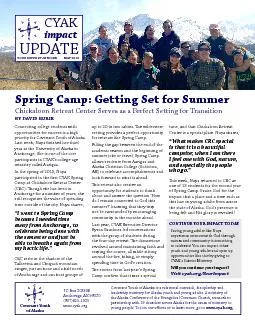PPT-2018 IDVA Spring/Summer Conference – Camp
Author : alida-meadow | Published Date : 2019-02-05
Atterbury Indiana Department of Veterans Affairs IDVA Creating a Bridge for Our County Veterans and the StateFederal Department of Veterans Affairs Appeals Federal
Presentation Embed Code
Download Presentation
Download Presentation The PPT/PDF document "2018 IDVA Spring/Summer Conference – C..." is the property of its rightful owner. Permission is granted to download and print the materials on this website for personal, non-commercial use only, and to display it on your personal computer provided you do not modify the materials and that you retain all copyright notices contained in the materials. By downloading content from our website, you accept the terms of this agreement.
2018 IDVA Spring/Summer Conference – Camp: Transcript
Download Rules Of Document
"2018 IDVA Spring/Summer Conference – Camp"The content belongs to its owner. You may download and print it for personal use, without modification, and keep all copyright notices. By downloading, you agree to these terms.
Related Documents














